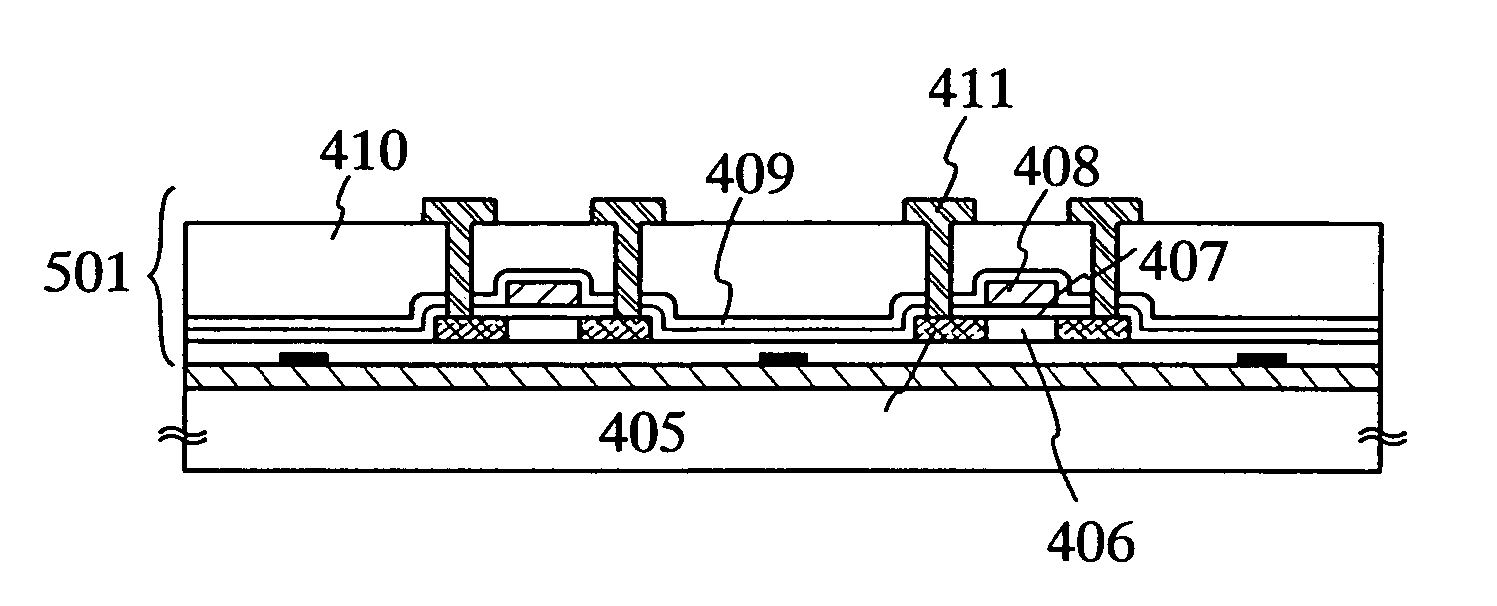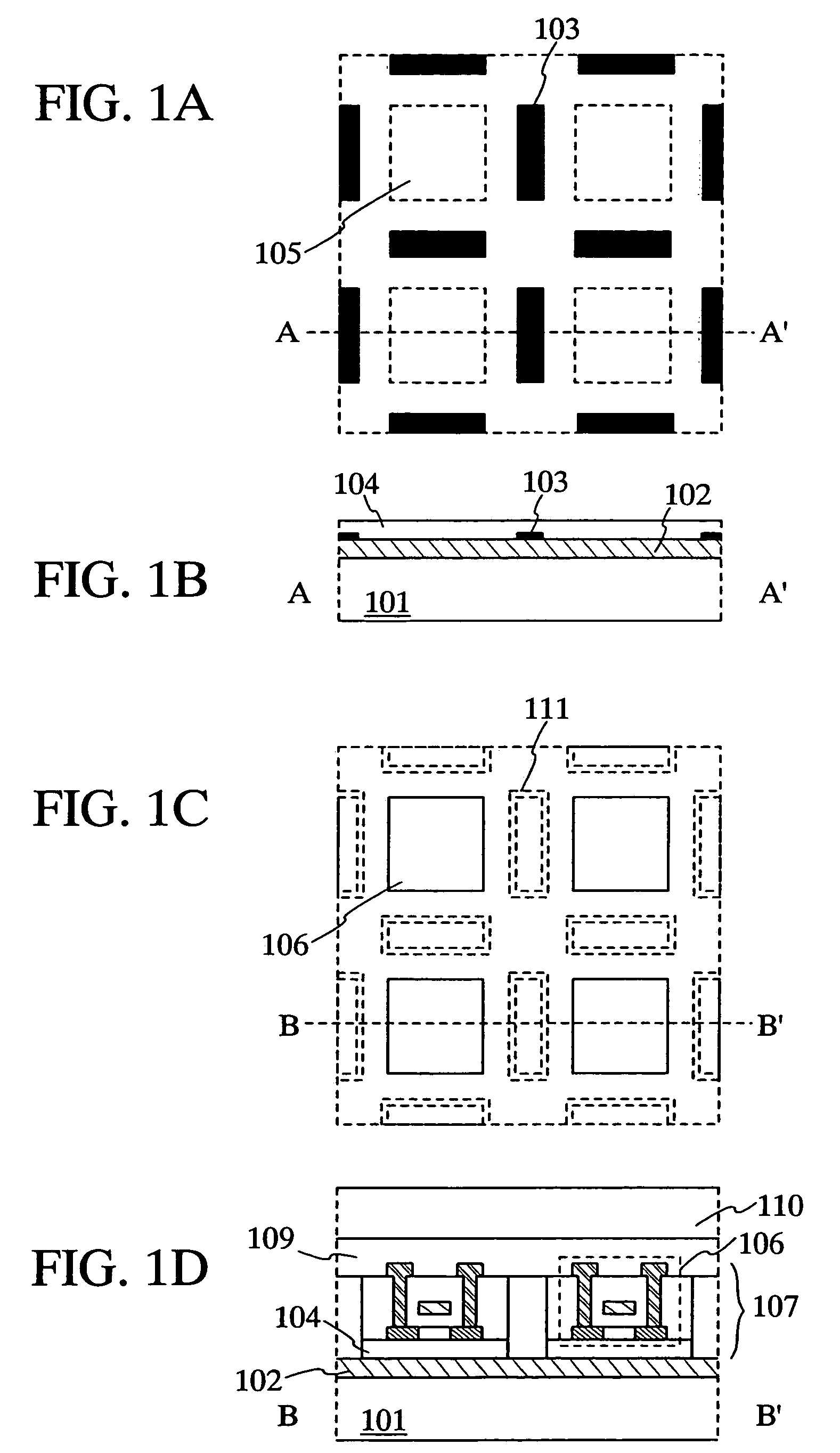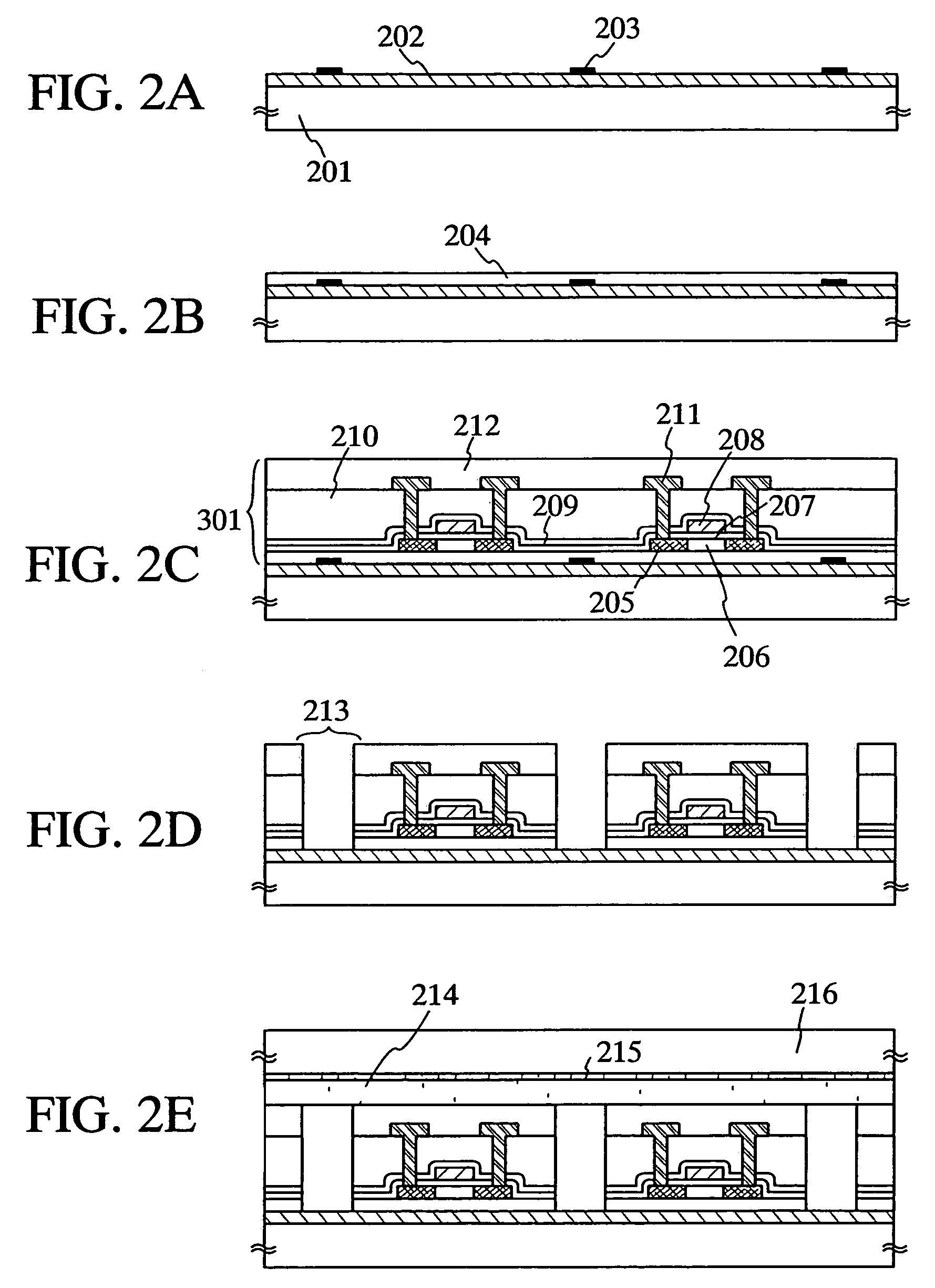Semiconductor device and method of manufacturing the same
- Summary
- Abstract
- Description
- Claims
- Application Information
AI Technical Summary
Benefits of technology
Problems solved by technology
Method used
Image
Examples
embodiment mode 1
[0071]An embodiment mode of the present invention is described with reference to FIGS. 1A to 1D.
[0072]FIG. 1A is a top view of a substrate where an adhesive agent of the present invention is formed, whereas FIG. 1B is a cross-sectional view taken along a dotted line AA′ in FIG. 1A. Namely, an adhesive agent 103 is formed like an island to be in contact with a metal layer 102 formed on a substrate 101 as shown in FIG. 1B. Note that, the adhesive agent that is formed here can enhance the adhesiveness of the metal layer 102 and the oxide layer 104 to be formed next, since the adhesive agent is formed between the metal layer 102 and the oxide layer 104.
[0073]A quartz substrate, a glass substrate, or the like can be used for a material of the substrate 101. However, a plurality of substrates can be bonded together and used, in the case where the strength is not enough when an element-formed layer (including a TFT) formed over a substrate is separated from the substrate in a later step.
[0...
embodiment mode 2
[0088]An embodiment mode of the present invention is described with reference to FIGS. 14A to 14D.
[0089]FIG. 14A is a top view of a substrate where an adhesive agent of the present invention is formed, whereas FIG. 14B is a cross-sectional view taken along a dotted line AA′ in FIG. 14A. Namely, an adhesive agent 3103 is formed like an island to be in contact with a metal layer 3102 formed on a substrate 3101 as shown in FIG. 14B. Note that, the adhesive agent that is formed here can enhance the adhesiveness of the metal layer 3102 and the oxide layer 3104 to be formed next, since the adhesive agent is formed between the metal layer 3102 and the oxide layer 3104.
[0090]A quartz substrate, a glass substrate, or the like can be used for a material of the substrate 3101. However, a plurality of substrates can be bonded together and used, in the case where the strength is not enough when an element-formed layer (including plural integrated circuits) formed over a substrate is separated fr...
embodiment 1
[0106]In this embodiment, a method for manufacturing including a transfer step of the present invention is described with reference to FIGS. 2A to 2E, and FIGS. 3A to 3D.
[0107]In FIG. 2A, a metal layer 202 is formed on a first substrate 201, and a plurality of adhesive agents 203 are formed thereon.
[0108]A glass substrate or a quartz substrate can be used as the first substrate 201 in this embodiment. Note that, a glass substrate containing barium borosilicate glass, alumino borosilicate glass, alumino silicate glass, or the like as a material is suitable. Representatively, a 1737 glass substrate (distortion point of 667° C.) manufactured by Corning Incorporated, AN 100 (distortion point of 670° C.) manufactured by Asahi Glass Co., Ltd., and the like are applicable. AN 100 is used in this embodiment.
[0109]A material of the metal layer 202 can be a single layer made of an element selected from the group consisting of: tungsten (W), molybdenum (Mo), technetium (Tc), rhenium (Re), ruth...
PUM
 Login to View More
Login to View More Abstract
Description
Claims
Application Information
 Login to View More
Login to View More - R&D
- Intellectual Property
- Life Sciences
- Materials
- Tech Scout
- Unparalleled Data Quality
- Higher Quality Content
- 60% Fewer Hallucinations
Browse by: Latest US Patents, China's latest patents, Technical Efficacy Thesaurus, Application Domain, Technology Topic, Popular Technical Reports.
© 2025 PatSnap. All rights reserved.Legal|Privacy policy|Modern Slavery Act Transparency Statement|Sitemap|About US| Contact US: help@patsnap.com



